Introduction : from concept to reality
Islam in France : a troubled history
One population, many communities ?
The different layers of muslim community
The muslim electorate: smoke and mirrors
French and muslim: an identity to invent
Paths and identity
France’s muslims : a cultural exception
The ethnicisation of islam
Consular presence
Individuality vs. community
Generational divide
Strong internal currents
Structuring a fantasy community
Conclusion
Summary
For over twenty years, Islam in France has been a regular source of public debate. But while the existence of a Muslim community is generally accepted, the reality is more complex. Is the concept of the ummah – in the sense of a community bound together by faith – reflected on the ground? This paper will present various areas of analysis in order to better define the Muslim community.
Often a source of controversy, French Muslims are nevertheless a varied group. Whether it be different currents within the population, individual life paths or varying connections with their countries of origin, Islam in France is far from a uniform and unchanging landscape.
If we look closer, we can see the extent to which the idea of a community is pure fantasy, an intellectual shortcut. This erroneous perception of Muslims is also influenced by the long and tumultuous historic relations that the Christian West and the Muslim East have endured ever since the start of the Crusades. It is essential that we make the effort to understand France’s Muslims, as the incarnation of a religion characterised by its multiple currents of thought. At a time when tensions are reaching their peak, shedding light on this issue is a prerequisite in order for us to fight against obscurantism and foster more harmonious relations within our national community.
Nadia Henni-Moulaï,
Journalist, founder of MeltingBook, entrepreneur and author.
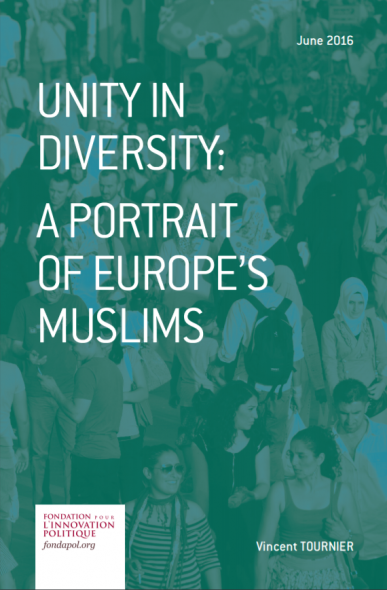
Unity in Diversity: a portrait of Europe's Muslims
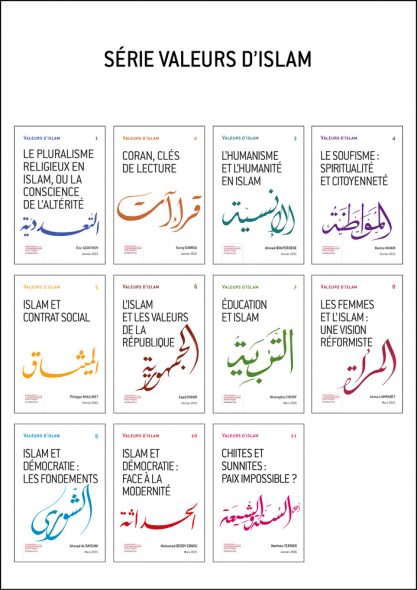
Values of Islam: A series of studies from the Fondation pour l’innovation politique
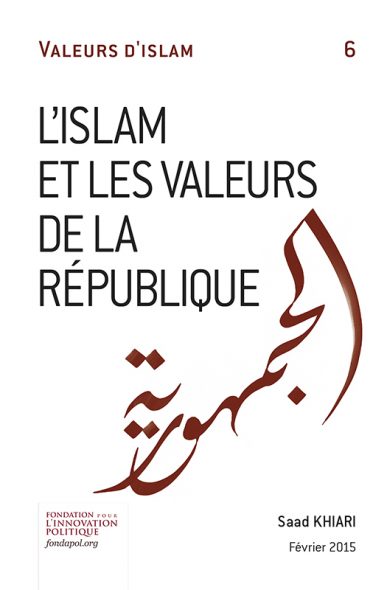
Islam and the values of the Republic
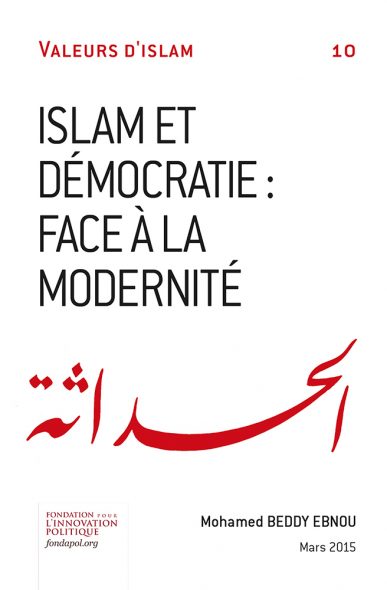
Islam and democracy - Facing modernity
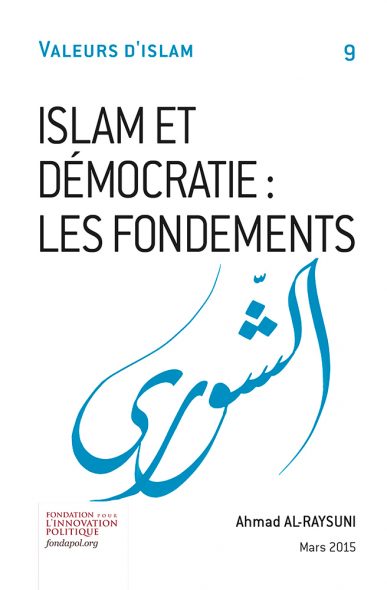
Islam and democracy - The foundations
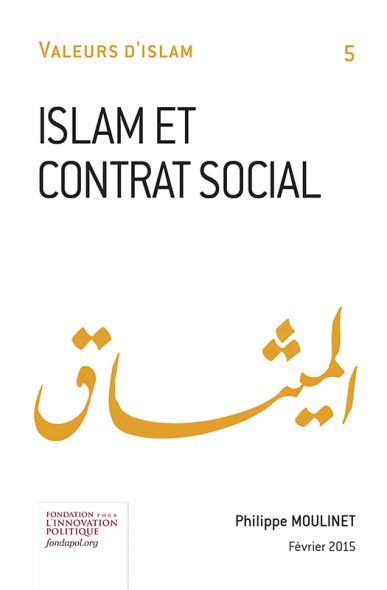
Islam and the social contract
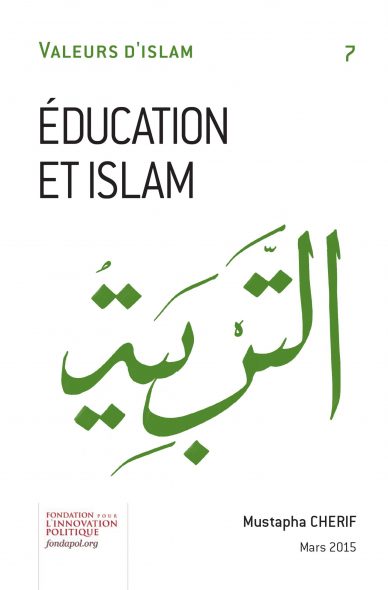
Education and Islam
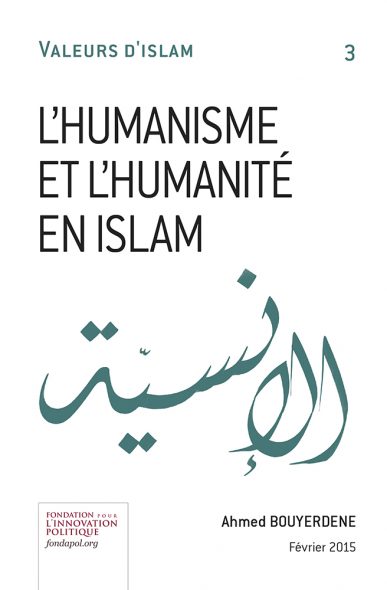
Humanism and humanity in Islam
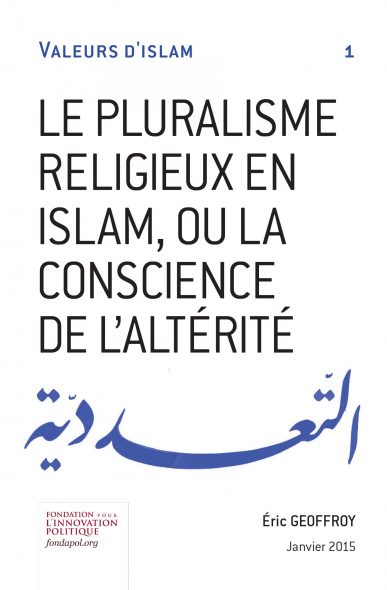
Religious pluralism in Islam, or the awareness of otherness
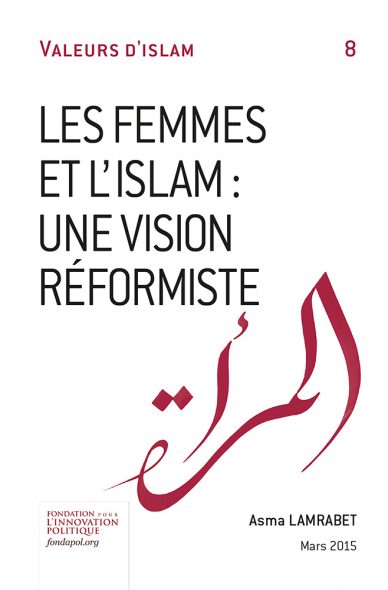
Women and Islam - A reformist vision
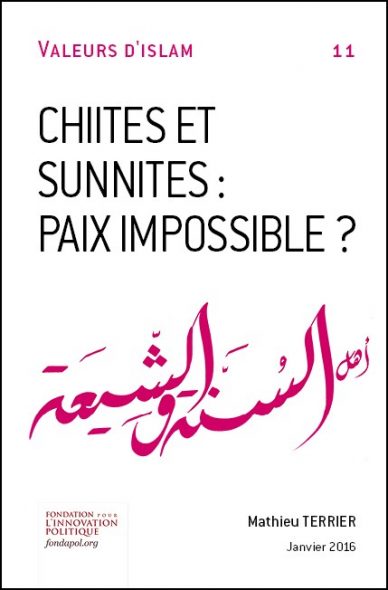
Shiites and Sunnis – Is peace impossible?
Introduction : from concept to reality
In French: Haute Autorité de lutte contre les discriminations et pour l’égalité (HaLDE).
Created in 2005, the HaLDE ceased to exist in its missions have since been assured by the Human Rights Commissioner.
Edward Said, Covering Islam, Vintage Books, 1997 p. 170.
Ibid, p. 170.
Due to its treatment in the media and by politicians, Islam in France is often at the forefront of public attention. This can be explained, superficially at least, by the international context. The 9/11 attacks ordered by al-Qaida in 2001 and the atrocities directly or indirectly committed by the Islamic State in France – notably those carried out on 7, 8 and 9 January 2015 and 13 November 2015 – have had serious repercussions on the perception of Islam in France, and as a consequence for French Muslims that reside in the country. Since 2001, an increasingly prominent place has been occupied by Islam and its representatives, both in the news headlines and in political discourse. Over recent years, it has been impossible to avoid the mounting controversies surrounding France’s Muslim population, initiated by the political class and relayed by the press, or vice versa.
During the mandate of former President Nicolas Sarkozy, the establishment of a Ministry of Integration, National Identity and Co-development led to a confused debate on the issue of identity. Evidently, such a debate must not become a taboo subject, but rather lead to constructive proposals for the future. Yet this debate has been poisoned by those who wish to promote the idea that Islam and the French nation are incompatible. Back in 2009, according to some people the “halal Quick” affair – one of many such controversies – jeopardised the very foundations of the French Republic and secularism. The fast-food chain, wise to the potential custom that France’s Muslim population offered, decided to serve halal-only burgers at eight of its restaurants. René Vandierendonck, the socialist mayor of Roubaix, one of the pilot towns chosen for the experiment, appealed to the French Equal Opportunities and Anti-Discrimination Commission1 to denounce what he deemed to be “discriminatory” practices2. The controversy surrounding the affair intensified when several political personalities, including Marine Le Pen, criticised Quick’s decision. Once more, the silent majority of France’s Muslims, wishing to be viewed with no more than indifference, found themselves thrust into the midst of a political media storm, with no control over the image that was being projected of them. From prayers in the street to nannies wearing the veil; from the use of head scarves at university to long skirts: Islam has never had such a high profile in the media.
Over the last five years, a succession of controversies have come and gone, driven along by a relentless media agenda that allows no place for nuanced or in-depth analysis of the information. And yet time has a decisive effect on how information is consumed. Consequently, a good number of non- Muslim French people have found themselves questioning, or even fearing, the visibility of Islam in France. And they stumble upon questions to which they are unable to find nuanced answers to shed light on the subject, and to spell out the rich plurality of Islam in France.
This is a failing that raises serious, and even worrying, questions. Lest we forget, it is the responsibility of politicians to manage public affairs and that, in principle, it is then up to the press to relay that information and clarify the issues at stake. Issues, for example, like the need to know what is meant when we address the subject of “Islam in France”. This is a critical point. The words are important, and the concepts likewise, which is why they absolutely must be handled with care and precision. In L’Islam dans les médias, Edward W. Said, the Palestinian intellectual and professor of literature at Columbia University in New York, examines the relationship between the western media and Islam. He singles out the responsibility of “guilds and journalistic ‘experts’ who, losing touch with the realities of community, good sense, and intellectual responsibility, either promote the special interest group at all costs or put it (…) at the service of power”. The result of which, in his opinion, is that “foreign societies or cultures like Islam end up being covered more than elucidated or understood”3. Somewhat pessimistically, Edward W. Said fears “that new fictions will be invented and unheard-of varieties of disinformation circulated”4.
Of all the vague concepts that can be heard time and again in political and media circles, the most common is that of the “Muslim community”. If we are to believe the news, Muslims in France supposedly belong to one same community of values, to a uniform block that thinks and acts as one. Yet the term “community” fluctuates in accordance with the reality to which it refers, and its meaning may vary. In the case of the Muslim community, its definition boils down to the concept to which it is referring: a group of people who share something in common.
Although French Muslims are thought to be de facto members of the Muslim community, the reality appears to be more complex. By definition, a community establishes a set of common values for its representatives. In the case of Islam, although not an exhaustive list, these values can be summarised as peace, respect, solidarity and social harmony, which the members of that community are expected to demonstrate through their practice. These values reflect the values of the French Republic.
The very definition of “community” refers to a conceptual reality. Philosophically, it relates to an abstract representation of a reality, in this case that of the Muslim population. While French Muslims may embody this abstraction in their collective subconscious, it is nevertheless impossible to identify the specific details of this community. Given its abstract nature, at what point does one start to belong to the Muslim community? Is it enough to claim to be a Muslim in order to identify with and be welcomed into the Muslim community? And, in the opposite sense, can one leave the community by simply rejecting Islam? These questions show the difficulty of defining the notion of community in general. In the case of Islam in France, these questions take on a particular dimension, given the significance of the issues at stake. France’s Muslims form a community in permanent mutation, affected by a succession of religious, social, economic and even political realities.
Islam in France : a troubled history
Mohammed arkoun (ed.), Histoire de l’islam et des musulmans en France, albin Michel, Paris, 2006.
Jacques Le Goff, “Préface”, in Mohammed arkoun (ed.), op. cit., p. 15.
Ibid., p. 16.
Michel Renard, “Les débuts de la présence musulmane en France et son encadrement”, in Mohammed arkoun (ed.), cit., p. 712.
Ibid.
Ibid., p. 713.
Alain Boyer, « Les débuts de la présence musulmane en France et son encadrement », in Mohammed arkoun (ed.), cit., p. 768.
The Muslim community has existed in so far as it has occupied, since the start of the 20th century, an increasingly prominent place in French society. However, it has also managed to write itself into the National Story of France. Initially a seasonal workforce, Muslims from the colonies demonstrated their determination to stand up in defence of western values during the two world wars. But what is striking about this Muslim population is its lack of structure. Having arrived at the start of the 20th century, the first migrants from the colonies also symbolised beliefs that had previously been considered incompatible with Christianity and the West in general.
While the presence of Islam in France may be, in the opinion of many, a new phenomenon, the reality presented by France’s historical timeline is entirely different. Led by Mohammed Arkoun, with a preface by Jacques Le Goff, the bountiful Histoire de l’islam et des musulmans en France du Moyen Âge à nos jours 5 sheds precious light on this issue. At the start of the 8th century, peoples from North-West Africa, having been converted to Islam, conquered the majority of the Iberian Peninsula. A convoy advanced to Poitiers, where it was defeated by the Frankish leader Charles Martel. This battle of the year 732 was a historic and symbolic event, whose echoes are still felt to this day as a symbolic “victory for Christianism and Western civilisation over Muslim barbarism”.
This opposition between two systems of values formed the basis of a turbulent relationship. As numerous academic studies have shown, the figure of the Muslim became synonymous with a rejection of Christianity, incarnated by the Church. From Poitiers onwards, and even if Arab philosophers – such as Avicenna and Averroes, commentators of Aristotelian thought – enjoyed recognition during the Middle Ages, people’s imaginations tended to paint a negative picture of relations between Islam and the West. The Muslims would for many years be known as “Saracens”, an ethnic term replaced by “Mohammedists” at the end of the Middle Ages and then “Mohammedans” during the 16th century. It was only during the 20th century that the terms “Islam” and “Muslim” started appearing in France.
Muslim culture would nevertheless transcend borders in the form of the negative image surrounding the Prophet Muhammad, also seen as the eternal rival of a Christian West constantly seeking to affirm its identity. As underlined by Jacques Le Goff, “Islam had been the Other in opposition to Christianity. Yet identity is often borne out of opposition to an Other”6. This may go some way to explaining Christianity’s troubled relationship with Islam. Throughout the centuries to follow, with very few exceptions, the relationship between Islam and the West was reduced to that of an enemy whose bellicose ambitions must be kept in check, an opinion that is still regularly heard today. A turning point came at the end of the 19th century.
According to Arkoun and Le Goff, “the colonisation of Algeria from 1830 onwards, of Tunisia and Morocco in the form of protectorates, then of Syria and the Lebanon between the two world wars, as well as of sub-Saharan Africa and its many Muslims, and finally Tunisia, marked a shift in relations between France and Islam”7. Colonisation had a destabilising effect, casting one of its protagonists – Muslims from the colonies associated with Mediterranean Islam – in the role of the oppressed. The royal command of 24 February 1834, which officially made Algeria an annex of France following the capture of the Algerian Dey in 1830, paved the way for a new era. Although “indigenous” Muslims and Jews were considered as being French, they enjoyed neither civic nor political rights. The old enemy from the Muslim world, repelled at Poitiers all those years ago, thus became a subject placed under the direct and immediate sovereignty of France. When the Crémieux decree was passed on 24 October 1870, the previously equal status of Algerian Muslims and Jews became imbalanced. The latter were granted French nationality, a key step in their assimilation into the country. Yet it was also a step towards the establishment of an unequal framework of systemic discrimination against Muslims in France and throughout its territories.
The presence of Islam in France was distorted from the start. The status of subject applied to the indigenous people, the violence of colonisation, the unequal system to which soldiers in the colonies were subjected during the two world wars, and subsequently the conditions suffered by the “workers from North Africa”; none of these factors encouraged the formation of a healthy relationship between Islam and France. Above all, these factors did nothing to foster a sense of belonging to the nation, even for those living in mainland France. For a century, Muslims have struggled to consider themselves as being actively involved in French society. The myth of return is just one example. For Muslims, France has gone from being the colonial power, to the front, to the land of economic promise; but never the land of their dreams.
However, as Michel Renard points out, “we must not neglect the displays of gratitude or the currents of positivity towards indigenous peoples and Muslims at the start of the 20th century, which helped to generate genuine interest in Islam and Muslims”8. The construction of the Paris Mosque, which opened in 1926, and the Franco-Muslim Avicenne Hospital in Bobigny (in the Seine- Saint-Denis department), “did not therefore respond to the needs of a large population”9, which suggests a community in the process of development. But no; rather, for the French authorities, it was about paying tribute to the soldiers from the colonies who had lost their lives between 1914 and 1918. In spite of the negative image endured by the Other (the indigenous people), colonisation and then decolonisation would trigger several waves of immigration. Muslims were setting foot on French territory, making their mark on France’s history in a new way. But it is very much in the 20th century that Muslim presence in France really started to build.
The First World War aside, at the very start of the 20th century several thousand emigrants – 5,000 according to the General Government of Algeria –, Algerians and Kabylian in the majority, had already made their way to mainland France in search of seasonal employment. In December 1904, a new law facilitated the movement of people between France and Algeria10. Yet at this stage, the number of Muslims in France was still a long way off the 4.3 million calculated by the French Institut national démographique (INED)11, a figure that we will return to later.
In 1926, Algerian workers formed the most significant immigrant community. These were the first signs of France’s Muslim community. In total, the First World War had seen the mobilisation of 280,000 soldiers from North Africa, in addition to 200,000 from the sub-Saharan continent. According to historian Jacques Frémeaux, 200,000 to 250,000 men from the colonies of North Africa were sent to the Second World War between 1943 and 1945. Due to colonisation and war efforts, the presence of Islam in France thus progressively changed in nature.
Post-1945, Muslims from the colonies can be said to have already settled in mainland France. The country, which was undergoing a process of reconstruction but also enjoying a period of economic growth, would once more start welcoming immigrant workers from 1950 onwards. In particular, the State signed agreements with Morocco and Tunisia to accelerate the intake of this unskilled, cheap, discreet workforce. Big businesses, including the automobile industry, carried out recruitment directly in villages in Morocco and Tunisia. These were the famous “ouvriers spécialisés” (OS). These workers, aware that they could find employment in mainland France with wages that would be unthinkable in Africa, got on diligently with their jobs, with the idea of ultimately returning to their country of origin. The period until 1974 would see the largest influx of immigration in France’s history.
Despite various hiccups over the years, particularly relating to the Algerian War, the Muslims present in France – referred to as “workers from North Africa” – gradually acclimatised to life in their new land. While North Africans were among the first to settle, they would soon be joined by Muslims from the ex-colonies of sub-Saharan Africa, the Comoros and Turkey. As underlined by Alain Boyer, “religion does not seem to be the main consideration for North African workers, whose existence boils down to a life of employment in France in the hope of securing a better future, often expected to be back in their country of origin”12.
From 1974 and up until 1982, the phenomenon of family reunification changed the nature of the Muslim presence in France, seeing a shift from temporary economic immigration to permanent immigration. The arrival of the missing links – the wives and children of the “workers from North Africa”, among others – would firmly and enduringly establish Islam in secular France. And with it emerged the first needs relating to religious practices. This was an unprecedented step. At the time, religious practices were organised with the help of the consulates of the countries concerned. France gave these institutional networks free rein to organise the religion, while remaining in compliance with the state’s laïcité. This is the famous “consular Islam” that is still in place today.
The 1980s saw another significant turning point. The first generations of French citizens of a migrant background began to appear, identity cards in hand. Whereas their parents had placed much importance on acting with discretion, the children would start to incorporate the concepts of “liberty” and “law” into the construction of their identities and school careers, then later into their political and entrepreneurial adventures. While the emergence of these young people of migrant background was a slow process, it has nevertheless resulted today in a distinctly visible minority of the public sphere, emboldened in recent years by the internet. Nowadays, the web serves as an unprecedented platform for expression for these populations, in the same way as urban cultures had been thirty years earlier.
Since the 1980s, Islam has therefore seemed to serve as a vector of community belonging. In contrast to the imported Islam of their parents, who used it as a way to preserve intimate connections with their country of origin, this newer generation of immigrants has developed a new form of religious practice. Passed down for generations with varying levels of enthusiasm, the practice of the elders does not necessarily result from teaching.
When speaking with a panel of young Muslims born in France at the end of the 1970s, it becomes clear that the religion is passed down more via rituals than via the academic teachings of Islamic science. It was only during the 1980s that this all changed, when those younger generations of educated French Muslims used their newly-developed skills in critical analysis to approach the teachings of the Koran as a disciplinary science. In stark contrast to their parents, these young people from migrant backgrounds intellectualised the texts, extracting a more profound practice than their elders. Whether their interpretations were literal or not, the result was a new religious and spiritual approach to Islam. The parents – who were constantly struggling to find a harmonious balance between Islam’s rituals and its spirituality, while remaining faithful to the unconscious need for discretion that stemmed from their profile as indigenous immigrants – were “usurped” by these younger generations, who at times gave rituals precedence over the spiritual dimension of the religion.
Symptomatically, and in contrast to received wisdom, the response to the issue of the veil that emerged in 1989 was not unanimous among older Muslims, who were wary about attracting the attention of the Other (non- Muslims). This was a response that spoke volumes for generations who had lived through colonisation, an experience tainted with humiliation and above all characterised by a “dominator vs. dominated” dynamic. Yet whereas they retained their traditional discretion, the new French citizens refused to bow down or be tacitly dictated to, a trend that would intensify over the course of the following years. In this context, the example of the head scarf was a marker, one traditionally associated with the parents’ culture of origin. Nowadays, it is also a perfect example of the way in which these young people have juxtaposed the original culture of their parents and the culture that they have built/experienced as French citizens. These young Muslims of migrant background, in contrast to their parents, enjoy access to all forms of knowledge, including religious knowledge. This re-appropriation of traditional rites and of a greater visibility for their faith is an expression of their freedom. Their freedom to read and to live the life of a “French citizen of migrant origin” as they understand that condition to be. And it is because they feel French that they permit themselves to write their own individual narratives, as they see fit. The public has bared witness to the fabrication of this new identity, one that is both French and Muslim. This is a sequence that continues to this day and that has proved somewhat painful, in the same way as the introduction of the religion of Islam, previously considered alien to the French Republic, has shaken the national narrative.
Muslims in France have therefore not written their own personal story. Until the 1990s, this community had no structure, despite a historic presence in the country stretching back over many years. In fact, their arrival in France implicitly resembles – the term is strong – an “accident” in history. Previously, Muslims had built their relationship with France around the myth of return. However, this has no longer proved to be the case for the generations of French Muslims born since the 1970s. The myth of return has evaporated away, paving the way for new collective aspirations: to give Islam in France a visible role to play in the national story but, more importantly, to be able to write their own chapter, its central character a plural community compatible with republican values.
One population, many communities ?
Raphaël Liogier, Le Mythe de l’islamisation. Essai sur une obsession collective, Seuil, 2012, p.115.
Ibid, 118.
Patrick Simon and Vincent Tiberj, art.cit.
Ibid., p. 8-10.
Ibid, p. 6.
Raphaël Liogier, op.cit.
In the wake of the deadly attacks against Charlie Hebdo and the Hyper Cacher store at Porte de Vincennes, a survey published on the Atlantico website revealed the concerns held by the French people with regard to the Muslim community13. For 40% of those surveyed, the latter represented “a threat to the identity of our country”. Elsewhere, the study showed that 66% of French people considered “that we must not generalise, Muslims live peacefully in France and only radical Islamists represent a threat”. These two examples neatly illustrate the differences of opinion, even the tug-of-war, that characterise the views of the public – represented on this occasion by the 1,002 people surveyed – when it comes to addressing the issue of Islam and Muslims. These figures spell out an interesting reality. The second religion in France, presented as a community, engenders rejection. When faced with a structured religious group, a negative fantasy builds up in the minds of the French public. As sociologist Raphaël Liogier puts it: “the metaphysical Muslim that ends up as a mystical vision of conspiracy, with the flesh and bones Muslim literally vanished, to be replaced by a metaphysical principle”14. Raphaël Liogier also adds that the Muslim is considered to be “deprived of specific regional, social, economic and personal characteristics, the Muslim, in one sense, has no individual soul, he is only an all-conquering collective”, incorporated into the enemy from within15.
On the other hand, a consideration of the differences between peaceful Muslims and radical extremists leads to a more nuanced judgement, infused with alterity. The reality of the Muslim population has many faces, and is shaped by the prevalence of different individualities and different life paths. When the individuality of the Muslim is taken into account, he becomes the next-door neighbour, the person you bump into at a hall of residence, the school gates or the supermarket.
This is why we need to move beyond the overarching concept of a “Muslim community”. Firstly, because it is nothing but a fantasy. Secondly, because envisaging that this group is characterised by an imaginary uniformity removes any nuance from our analysis, a prerequisite if it is to be constructive.
What’s more, in the aftermath of the carnage committed on 13 November 2015 in the name of the Islamic State, the image of Muslims shifted somewhat. An Ifop survey published on Atlantico indicated that 67% of French people differentiated between those Muslims “living peacefully in France, and the radicals”16. The questionable use of the term “radical” aside, against all odds these attacks inspired non-Muslims to acknowledge the complexity of the so-called “Muslim community”. It took such atrocities for the press to finally grasp the heterogeneity of the Muslim reality. On 25 November, an article was published in Le Monde entitled: “Why we must not confuse Salafism with Takfirism”. Journalist William Audureau drew on a declaration made by Prime Minister Manuel Valls on 18 November, in which he traced a line between Salafism and radical Islamism without acknowledging the practice of Takfirism, an ideology that advocates violence. Quite aside from the ignorance this demonstrated, the Prime Minister’s declaration did nothing to relieve the opacity that surrounds the subject.
In July 2013, the INED published a document in which two researchers presented their findings from a study entitled Trajectoires et origines (TeO). The document mainly concerned the Muslim community and studied the relationship between French citizens of migrant background and religion in the secular French Republic17. The study discussed why it is questionable to talk about the concept of a “community”, referring to a group of people united around the same beliefs and practices, in relation to Muslims. Among the statistics presented in the document, we learn that the number of Muslims in France is believed to vary between 3.98 and 4.3 million18. The authors assume an average of 4.1 million people. All of these numbers fall a long way short of the figure of 7 million that is frequently cited, both in the media and by certain French Muslims.
Yet while Islam is indeed the first religion of France’s migrant population, its practice does not truly correspond to the impression given by public opinion. The INED study is clear, and illustrates just how imprecise and distorted the representation of Muslims has become. While 49% of Muslims are strongly religious, which is to say that they consider that religion occupies an important place in their lives, 47% of them are so-called “moderate” Muslims. The adjective refers, in the categorisation proposed by the authors, “to people who declare that they only place little or some importance on religion”19. But the expression “moderate Muslim” is problematic for those to whom it refers. As far as they are concerned, it introduces the idea that an intense practice is necessarily radical. Islam offers a perfect balance between rituals and thought, above all if its practice is based on profound and rigorous knowledge, free from any political considerations. The Islam practiced by the silent majority is positioned on this balanced middle ground. To systematically qualify the term “Muslim” with the adjective “moderate” would be proof of a negative preconception prevailing among the public opinion towards those who practice Islam. It would equate to requiring each Muslim to prove that they practice their religion in a reasonable manner. This is essentially the point made by Raphaël Liogier, when he likens this talk of moderation to discussing drugs: Islam is fine, but only in small doses20.
The last category that emerges from the survey are the so-called “detached” Muslims. They represent 4% of the members of this community. This group is made up of individuals who define themselves as Muslims, but who claim that the religion “is of no importance to them”. These are “cultural” Muslims, according to the TeO study. This fringe of the Muslim population can refer to either immigrants or their descendents born in France. For them, Islam is all about their background and family heritage. It is less about the faith itself, and more about maintaining a form of emotional connection with loved-ones. The members of this category do not practice the religion, but may still celebrate traditional festivals or adhere to a pork-free diet. “Detached”, “moderate” or “very religious”: these terms and this approach enable us to apply categories and cite figures concerning a Muslim community in France that is made up of a series of moving layers.
The different layers of muslim community
The TeO survey, carried out between 2008 and 2009, gives us a better grasp as to how religious France’s Muslims are, whether they are immigrants or of migrant origin. If we base our analysis on the three groups already defined – detached, moderate and very religious – the differences are indisputable. However, are these intra-community strands enough to question the very existence of the community? If this belonging had to rely solely on the existence of a link, however tenuous, with Islam – being born into a Muslim family; preserving a distant link; even having facial features that recall, however erroneously, this religion, etc. – then a Muslim community, heterogeneous but real, would indeed exist. However, nothing could be less certain.
The muslim electorate: smoke and mirrors
In recent years, the issue of a Muslim electorate has become a matter for public debate. At the last two presidential elections, both the Left and the Right have tried to appeal to this pool of voters. In 2007, during the duel for the presidency between Nicolas Sarkozy (UMP party) and Ségolène Royal (PS), the issue of the vote from working class neighbourhoods had been viewed through the prism of the banlieue. The perspective changed during the 2012 elections, with both the press and politicians themselves referring less to the vote from the cités (a term loaded with underlying social and religious connotations) and rather to the so-called “Muslim vote”. Beyond the term itself, this development neatly illustrates how the issue of religion has slowly taken precedence over that of working class neighbourhoods and their social emergencies.
Hence the growing interest among politicians, whether explicitly declared or not, for a “Muslim electorate” which, in the collective mind, is synonymous with the residents of the banlieue. If we base our analysis on the government’s list of high priority geographical targets as it stood until December 2014, the date on which the classification of many of these areas passed from urban to rural – an innovation introduced as part of the “territorial equality” policy favoured by François Hollande –, we can assume that 8.1 million people lived in these Sensitive Urban Zones (from the French Zones urbaines sensibles, or ZUS), out of France’s total population of 63.2 million21. A considerable source of votes, certainly. In these areas, one resident in two is an immigrant or of migrant origin. We can therefore assume that France’s Muslim community carries significant electoral weight. And from this perspective, we could also assume the existence of a Muslim electorate contained within this same community.
When we consider that poverty affects one out of three residents in the ZUS areas, and that the unemployment rate there is 2.5 times higher than elsewhere in France, it comes as no surprise that votes from those with a migrant background tend to be in favour of the Left. Numerous researchers have shown that the working classes traditionally vote for the Left. Indeed, in the wake of the Second World War, left-wing parties laid claim to the working class vote. French people of working migrant origin have not challenged this quite “natural” political stance, which still resonates with the social battles fought by their elders on arriving and settling in France before and after the waves of decolonisation. As such, when asked, we see that a good number of French citizens of migrant origin have grown up with a simplified vision of politics in which the Left has always fared best. “The Left like us, the Right not so much” is a recurring phrase that can be heard in the majority of immigrant families. It neatly sums up the way in which successive generations have approached political analysis from the perspective of the Right-Left spectrum. Yet their analysis of this spectrum relates not to social realities, but to identity. From an early age, the Left made an impression on children born into the lower classes of the banlieue at the end of the 1970s and the start of the 1980s, as their childhood coincided with François Mitterrand becoming President of the Republic. At the very moment, indeed, that the government’s so-called “urban policy” was born. A sequence of events that unquestionably and unconsciously embedded the Left, and above all the Socialist Party, in the DNA of these neighbourhoods, and vice versa. Indeed, this was an electorate that the Left thought natural to claim as its own: the neighbourhoods vote for the Left, Muslims live mainly in the ZUS neighbourhoods, so the Muslim electorate votes for the Left. It has proved to be sound reasoning.
French and muslim: an identity to invent
Pierre Mauroy, in declarations made to Nord-Éclair, 27 January 1983.
In French: Académie française de la pensée islamique (aFPi).
Comments made to Nadia Henni-Moulaï in their interview of 20 September 2015.
In French: Association de solidarité pour les travailleurs immigrés.
In French: Association de solidarité pour les travailleurs immigrés.
The 1980s constituted both a turning point and the start of a slow process of political emancipation for France’s Muslims. Throughout the summer of 1983, there were a series of violent confrontations between the police and young residents of the Minguettes cité in Vénissieux, near Lyon. The situation degenerated against a backdrop of shocking developments: five North Africans fell victim to racist murders according to the authorities, 21 according to the associations and labour organisations. Father Christian Delorme and Pastor Jean Costil, from the non-governmental organisation Cimade, put forward the idea of a march to the young residents, taking their inspiration from the Civil Rights March in the USA. Having left their home cité on 15 October 1983, the modest cortege passed through France’s cities and towns on their way towards Paris, attracting both curiosity and sympathy. On 3 December, what was by then rechristened the “Marche des beurs” was subsumed into a grand parade gathering somewhere in the order of 100,000 people in Paris. Granted an audience with François Mitterrand, the President of the Republic, a delegation
from the march obtained pledges including the promise of a law to be drafted against racial crimes. A text in favour of the right to vote for foreigners in local elections was also discussed, but this measure has since stalled. The climate was tense. Indeed, the Front National (FN) was able to land its first significant political blow at a municipal by-election in Dreux: the FN and RPR tickets merged for the second round of voting, defeating the Left to win the election. The year 1983 also saw strikes at the Talbot factory in Poissy. To deal with the significant transformations that the automobile industry was going through, a restructuring of the sector’s factories became inevitable. Added to which, social relations became tougher and controversial assessment sheets, judged to be arbitrary, were introduced to inform adjudication on internal promotions. The Talbot strikes, a veritable “spring of unrest”, followed on from the industrial action taken at a Renault factory in Boulogne-Billancourt in 1973 and at Citröen in Aulnay-sous-Bois. They served only as confirmation that the figure of the immigrant had fallen victim to a form of stigmatisation. Prime Minister Pierre Mauroy declared at the time: “The main ongoing difficulties are caused by immigrant workers whose problems I am not unaware of, but who, it must be said, are agitated by religious and political groups, whose motives have little to do with French social realities”22. A can of worms had been opened, so to speak. While it is hard to find a place for this industrial action and the March for Equality in the heritage of battles fought by the French, they were nevertheless founding acts in the history of French people of migrant origin. On the one hand, because the ouvriers spécialisés (OS) fighting in the automobile factories between 1982 and 1984 were, to some extent, the parents of the young marchers in the autumn of 1983 and, on the other hand, because the issues of racism and the marginalisation of this fringe population are still manifested today in the form of the issues surrounding Islam. According to Jamel El Hamri, co-founder of the French Academy of Islamic Thought23, the March for Equality saw the birth of two trends that allow us a fuller understanding of France’s Muslim community24. The first trend was based on a citizen message, incarnated by historic marchers such as Toumi Djaidja, a symbol of the march. The second trend, the likes of which had never previously existed, would progressively emerge in the Lyon area. The marchers started to see citizenship as an extension of spirituality. Abdelaziz Chaambi – founder in 1981 of the Association for the Solidarity of Immigrant Workers25 (and a stakeholder in the organising the March – was among them. Nowadays, he is the head of the Coordination Against Racism and Islamophobia26. This is an “intra-march” departure that illustrates the first signs of fragmentation of the so-called “community”. The majority of the marchers came from migrant families of Muslim faith. Citizenship, spirituality and political engagement became the three key elements around which the development of the French population of migrant origin would revolve. Everyone would be affected to a different degree, and their development would take its own individual course at home, at school and at work. Already, as far back as 1983, these trends that started appearing during the March were laying the foundations for a plural Muslim community, with a firm attachment to the political Left that has started to erode away in the present day.
Paths and identity
Antoine Jardin, interview by Nadia Henni-Moulaï, 12 May 2016.
It would take only one step to progress from an immigrant vote, motivated by social issues and therefore more sympathetic to the Left, to a community vote, more conservative and Right-leaning. A progression that would take place, were the Muslim component of the population to be heterogeneous and unified. The difficulty, even impossibility, of grasping the different layers of the Muslim electorate neatly demonstrate this. French Muslims do not vote as one. Even if during the 2012 presidential elections, Muslim citizens certainly favoured the left-wing candidate, François Hollande, this was more to do with bringing an end to the overbearing feeling of stigmatism towards Muslims that characterised Nicolas Sarkozy’s mandate. “This inclination towards the Left is historical, not natural. If the right-wing vote has made up ground, it is above all when no National Front candidate is standing, such as during the municipal elections in 2014,” analyses Antoine Jardin, a researcher in political sciences27.
But the entrepreneurial spark of the working-class neighbourhoods is also pushing company-owners to the Right. According to a study published in 2010, 50% of entrepreneurs living in ZUS neighbourhoods are under 40 years of age28. This taste for entrepreneurship and liberalism is sweeping through the sections of society of migrant origin. A recent Financial Times article under the title “Uber: a route out of the French Banlieues”29 even looked at the stories of certain banlieue residents who, facing unemployment, found the Californian start-up to be a route back into work.
The analysis of the last municipal election in March 2014 conducted by Ville & Banlieue30, an association steered by elected representatives from working- class urban areas, clearly shows this. If we disregard abstention, the highest incidence of which has been found in certain banlieue communities – an abstention rate of over 60%, for example, in Clichy-sous-Bois –, the Right (UDI-UMP party) enjoyed a swing of more than 27% in its favour among the Ville & Banlieue’s elected representatives, sometimes dislodging left-wing candidates in traditional strongholds, such as in Athis-Mons (Essonne).
Ville & Banlieue has been a vessel of this change. Before the municipal elections, ten times more of its members came from the Left than from the Right but, following 23 March 2014, one in three of its members were right- wing elected representatives. Votes from those of migrant origin are no longer the sole reserve of left-wing parties in France. Any thought of the existence of a community of interests, based around social, economic and religious values, is therefore being shattered. The results are conclusive: the banlieue, where a significant share of residents are Muslim, is opening up to the idea of voting for the Right.
France’s muslims : a cultural exception
The issue of the Muslim electorate serves as a neat illustration of the element of fantasy relating to the French Muslim community. The religious vote is volatile by nature. Although today’s media and politicians are happy to talk about a homogenous Muslim community, the reality is entirely different. The fact that we can challenge the very existence of a Muslim electorate is the first sign of this.
The ethnicisation of islam
Ibid.
Ibid.
Ibid.
Algerian, Moroccan and Turkish mosques are examples of terms that are tacitly accepted by the Muslim faithful. Although trends change with time, it is not rare for practicing Muslims to choose a place of worship because of their own cultural connections with the head of the mosque or the imam. It is common knowledge, for example, that some of these religious figures are in fact directly sent by the Ministries for Religious Affairs in the countries of emigration. According to Omero Marongiu-Pierra, a specialist on Islam in France and a member of the CISMOC laboratory at the University of Leuven in Belgium, “there are between 100 and 200 Turkish imams, around 100 from Algeria and several dozen from Morocco”31. Given that there are 2,500 mosques and prayer halls in France, this is a relatively low share. These imams from abroad cause division among Muslims in France. On the ground, certain locally elected representatives of Muslim faith deplore this state of affairs. “Islam in France is in the hands of people who do not always fully grasp the country’s socio-cultural context”32, observes a municipal counsellor in Sainte-Geneviève-des-Bois, who also denounces “the consular protection of the Muslim religion33”. Hanane Karimi, a doctor of sociology and founder of the feminist movement Les Femmes dans la mosquée, denounces the patriarchal procedures but also the impossibility for young people to relate to the way in which their elders run the religion. To structure a community is to commit oneself in support of organising the religion. As highlighted by the same municipal counsellor, who is in touch with Islam on the ground and knows the subject well: “If they’re only committed to managing the religious side of things, nothing will ever happen. Managing a mosque is an all-round commitment just like being elected onto a parent-teacher association!”34
The ethnic structure of Islam in France is even more evident. France’s Muslim community is organised by nationality. Moroccan, Algerian, Turkish and more broadly sub-Saharan African – to name just a few – are the main backgrounds of those who govern the presence of Muslims in France. While followers do not necessarily pay much attention to this sense of ethnic “belonging”, their inclination towards a certain place of worship will be informed by an identity reflex, endogenous to Islam and symptomatic of a Muslim community that exists only by name. The foreign influence exerted over the mosque via the imam in charge of preaching plays its part in structuring Muslims in France along cultural lines, and provides another element that solidifies this sense of an ethnic French Islam.
Consular presence
On the ground, this multi-ethnic landscape manifests itself in the form of networks of places of worship, depending on the country concerned. For example, in Argenteuil in the department of Val-d’Oise, two large mosques have been built in recent years. The first is the Assalam Mosque, also known as the Dassault Mosque. It is renowned locally as essentially being an extension of Morocco in France. The head of the mosque, Mohamed El Aissaoui, is of Moroccan origin and is also the president of the Assala socio-cultural centre. Built on the site of an old warehouse owned by the Dassault Group, the building should be extended over the course of 2016 with funds raised from among the worshippers, according to Mohamed El Aissaoui. Imams sent by Morocco have taken up formal roles at the mosque. The second is the Al-Ihsan Mosque, also known as the Renault Mosque in reference to the site on which it is built, where an old Renault garage once stood. It is currently under the stewardship of Abdelkader Achebouche, an Algerian born in 1931. Having arrived France in August 1965, he had a series of jobs before founding, in 1974, two travel agencies that he continued to run until 1995. In search of a place of worship, he pragmatically built a hut in the garden of a friend’s home in Asnieres (Hauts-de-Seine department) before, on 28 June 2010, inaugurating the Al-Ihsan Mosque in the presence of the then Prime Minister François Fillon. This mosque stretches out over 3,000 m² and employs imams named in Algeria.
With 15 places of worship of varying size for its 28,000 Muslim inhabitants, the town of Argenteuil serves as a neat microcosm of Islam in France. In addition to North Africans, a significant share of the Muslims residing in the area are of Turkish origin. The latter have their own big religious centre in the area.
As far as the so-called “Turkish” mosques are concerned, the Diyanet – which directs religious affairs in Ankara – trains and then sends Turkish imams to France. The system of nomination for Algerian and Moroccan imams, once decided by informal groups, has now evolved. “The two North African countries have changed strategy in order to unofficially bring the places of worship under their influence”, explains Omero Marongiu-Perria35. The waves of immigration from the Maghreb, sub-Saharan Africa and Asia Minor are the main reason behind this division of Islam along cultural lines. Brought together in worker communities, Muslims in France have then organised themselves principally into socio-ethnic groups.
Preserving strong ties with their countries of emigration, Muslims in France have laid the foundations of what experts refer to as “consular Islam”, which is to say an Islam that is controlled back in the countries of origin of the first generations of immigrants. And these generations of religious figures still enjoy an overbearing presence within Muslim associations, causing an internal split within the population of Muslims in France. Culturally, we can speak of a divide. As an example, following the January 2015 attacks, a French Muslim based in Anjou, a surgeon by profession, expressed his irritation with a consular Islam that he deemed entirely out of touch with the dramatic events: “How can you expect an imam who arrived from Morocco three months ago, who knows nothing about French culture, French cuisine or Charlie Hebdo, to truly grasp such exceptional circumstances?”, he questioned36. These are words that reflect the fragmentation of this so-called “Muslim community”, which more closely resembles a jigsaw puzzle.
Individuality vs. community
The issue of the social paths taken within this Muslim population is also significant. Since the 1980s, access to higher education has been democratised. In working class neighbourhoods, areas where a large portion of the Muslim population reside, an increasing number of pupils are passing the French baccalaureate, a key step in order to be able to proceed to higher education. Furthermore, in the OECD’s latest PISA survey (Programme for International Student Assessment) in 2012, the analysis of the inequalities suffered by children with migrant backgrounds showed some significant results. It was revealed, for example, that the children of first generation immigrants obtained a score 83 points lower than the other children, compared with 60 points lower for those of the second generation. These results are anything but favourable, of course, but they nevertheless indicate an upward trend concerning school studies. Beyond the qualifications themselves, this progress has had a profound effect on the individual paths taken by the members of these populations. In the cités, the directions taken by the residents in general life have strongly altered the way that religion is practiced. As well as having an influence on the understanding of religious teachings, access to university- level knowledge has also changed methods of practice.
This is a point of difference that is also found within the Muslim community. At prayer time in a mosque, even though the ummah essentially erases all social, cultural and ethnic differences, in the reality of everyday life, French Muslims are just like the rest of the country’s population: diverse and many-sided.
Generational divide
Comments made to Nadia Henni-Moulaï in their interview of 13 January 2015.
Comments made to Nadia Henni-Moulaï in their interview of 13 January 2015.
At other levels, we can point to a generational divide. On the ground, the elderly Muslims that run religious associations have been unable or unwilling to pass the baton on to the younger generations. As Omero Marongiu-Perria puts it, “we have spent 40 years structuring Islam in France, yet it is still in the hands of those who first arrived”37. The sociologist goes even further, indicating “the absence of a French approach to this religion”38. The phenomenon of Islam in France must surely involve young French people taking ownership of this faith. It would appear necessary for those first-generation immigrants to hand control over to the younger generations in order to allow Islam to firmly put down its roots in France, and to leave behind the cultural and generational conflict that can sometimes be perceived in its relations with the institutions. On the ground, this divide manifests itself in how relations are managed between Muslims and public powers. While the older generations, immigrant parents, have always favoured informal discussions with elected representatives, the younger generations of French Muslims no longer think twice about using the law to assert their rights.
Originally created in the 1980s, in 2005 the Association Franco-Maghrébine of Saint Gratien (AFMSG), in the Val-d’Oise department, was in the process of acquiring a hall on the outskirts of the cité. “174,000 euros have been raised from among the congregants”39, claimed Ladli Lambarek, the association’s president at the time. However, the local authorities decided to move ahead with a social resettlement project and exercised their pre-emptive right to acquire the property. A line of dialogue, however, remained open between the town councillor and the senior figures at the association. But this entente cordiale was to come to an abrupt end in 2010. On 29 August 2010, a collective prayer session was organised on the sports field at Les Raguenets, a local working-class neighbourhood. In a spontaneous move, 200 people accused the town councillor of having infringed the rights of their church. Led by a group of young French Muslims, this action provoked both the ire of the local authorities – who denounced “the actions of Muslim extremists” – and of the “historic” Muslims represented by Ladli Lambarek. The latter had to deal with the birth, in 2010, of the Association des Musulmans de Saint-Gratien, on the initiative of those involved in the open-air prayers. Accused of being immobile and weak in the face of the town councillor, the association of elders resolved after several months to merge with the group created by the young locals. These developments were much criticised by other local Muslims who denounced a “form of disrespect towards the elders”. The AFMSG took the matter to the administrative court to appeal against the refusal of the local authorities to provide them with a hall, claiming a violation of their freedom of assembly and religion. On 16 August, the Council of State confirmed that the administrative tribunal had decided in favour of the association. Relations between the parties have been strained ever since, and communication has broken down on both sides.
In addition to the clear conflict between the public authorities and the local Muslims, these events also provide telling evidence of the emerging generational conflict between the first generations of Muslim immigrants who, back in the 1960s, ran French Islam as they saw fit, and the young French people who are the descendents of those first waves of immigration from North Africa, sub-Saharan Africa and Asia Minor. These young French citizens are more legally-engaged, and therefore carry greater weight in society than their elders. Theirs is an approach that contrasts starkly with their elders, who possess their identity cards but who still embrace a sense of duty to be discreet, inherited in all probability from their status as immigrants. This unique manner in which young Muslims with migrant backgrounds embrace their French nationality marks a very clear point of division within the Muslim community. While the historic cultural associations strive to preserve relations with public authorities that are based on compromise and concession, those run – in one way or another – by their younger relatives are happy use the legal weaponry available to them. They are fully aware of what it means to live in a state governed by the rule of law.
Strong internal currents
Cited by Nadia Henni-Moulaï, in « Communauté musulmane de France… », art.cit.
Ibid.
In French: Union des organisations islamiques de France (uoiF).
Not to be confused with the Salafs (“pious ancestors”). The latter refers to the first three generations of proponents of islam: the Prophet’s companions, and the subsequent two generations referred to by Muslims aspiring to unity, humanism, spiritual education and the respect of This distinction is important. as Eric Geoffroy explains in the next edition of his book L’islam sera spirituel ou ne sera plus (Seuil, yet to be published): “The lives that today’s Salafists live are in fact the precise opposite of those lived by those who they claim to follow, and some people speak of a “hold-up” of the islamic civilisation: they promote one-track thinking and uniformity of mind and action, while classic islam is characterised by plurality, diversity, a fusion of schools of thought and trends that modern people – whether Muslim or not – struggle to imagine. Scholar Muhammad Said Ramadan al-Bûtî (m. 2013) quickly turned their meagre slogan on its head, showing that the identity that they have assumed, salafiyya, was itself the “heresy” (bid’a) that they accuse everyone else of perpetrating.
In French: Fédération nationale des musulmans de France (FNMF).
In French: Conseil français du culte musulman (CFCM).
The myth of a Muslim electorate, the deep-rooted ethnic differences, the individual life paths and the generational divide are all realities for the Muslim population of France. In addition to this diversity, there is the problematic issue of the different religious currents that are present within the ummah, the community of faith that is itself an indication of this very characteristic structure. According to Hanan Ben Rhouma, editor-in-chief of Saphir News, a media outlet dedicated to Muslim affairs in France, “to either believe or create the perception that the Muslim community is made up of members who practice and experience their Islam in exactly the same way is a serious error”40. The journalist goes even further: “There is no Muslim community to speak of. It is characterised by its religious, ideological, ethnic, political and social diversity”41.
It is on the ground where the fracturing of the Muslim community is particularly visible. In France, the Muslim Brotherhood, incarnated by the French Union of Islamic Organisations42, a group of conservatives comparable with Christian democrats, are the most structured collective. The Tabligh, imported from India, is ultra-conservative but pacifist. Boasting a strong presence in working- class neighbourhoods, it advocates strict Muslim practice, without crossing the line into proselytism. In the 1990s, experts recognised its role in combating delinquency by leading young Muslims back to the mosque. The Salafists, taking their lead from Saudi Arabia, are in favour of a form of Islam judged to be ultraconservative and literal43. There are also other currents promoted by organisations such as the French National Federation of Muslims44, the Paris Mosque, the FAIAACA, the Turks, and so on. In practice, the French Council of the Muslim Faith45 struggles to govern such an eclectic landscape. This can be seen in the discredit that it suffers and the regular accusations that it is both absent on the ground – the source of its illegitimacy – and too close to political spheres.
Structuring a fantasy community
Comments made in a hitherto unpublished conversation with the author during a private meeting on the ground on 18 February 2015.
Twenty years of “France’s islam”
Muslims, in all their diversity, do not want to be reduced to the status of submissive pawns in an overarching organisation created from top to tail by the State. Even less so given that they are aware that they represent an electoral reference point for the whole of the political class. The creation of the CFCM is symptomatic of this. Over 20 years ago, the establishment of an institution to represent “France’s Islam” (rather than “Islam in France”, which would have taken into account the full plurality of the realities experienced by French Muslims) was discussed. It was in 1990 when Pierre Joxe, François Mitterrand’s Minister of the Interior, created the Conseil de réflexion sur l’islam de France (Corif). It was an innovative move, but one that suffered due to its format for designating members, based on nomination and co-option. In 1993, Charles Pasqua, then Édouard Balladur’s Minister of the Interior, took his turn in trying to organise the Muslim community, creating the Conseil représentatif des musulmans de France. The Paris Mosque, affiliated to Algeria, spearheaded this new initiative, but it was not to the taste of all Muslim organisations. After that latest failure, the project was revived in 1999 by Jean-Pierre Chevènement, Minister of the Interior under Lionel Jospin’s government. He initiated a consultation with France’s Muslims, in the hope of laying the foundations for a new organisation. Counting on the support of the regionally elected delegates, this latest initiative would culminate in 2003 with the creation of the famous CFCM under the impetus of the then Minister of the Interior, Nicolas Sarkozy. It has therefore been a drawn-out process, successively led by right-wing and left-wing politicians, and one that remains, despite all efforts, a work in progress. While all involved agree on the absolute necessity to find an institutional intermediary for the Muslims of France, it remains to be seen whether it is really the State’s place to participate in the organisation of the Muslim faith.
Conclusion
Émile Poulat, Scruter la loi de La République française et la Religion, Fayard, 2010.
The very concept of a “Muslim community” sounds above all else like an intellectual shortcut. It is an easy way out, language chosen to reinforce a fantasy: that French Muslims are the agents of communitarianism. Yet how can we speak of “communitarianism” in the absence of a homogenous, clearly-defined and structured community? The buzz that is created by the media and politicians around the issue of Islam in France raises the question of the “self-determination” of this population. In a secular society, what room for manoeuvre do France’s Muslims have, in order to independently write their own narrative? In a state governed by the rule of law, like France, the question is of course a rhetorical one. Muslims, benefitting from the favourable conditions provided by the Law of 1905 concerning the separation of Church and State, enjoy a welcoming environment in which to practice their faith in peace and security. And it is because that text is a point of reference not just for Islam, but for all faiths, that it offers them the freedom to carve out their own niche in the French Republic in total independence. This law does not allow the authorities to meddle in the cultural affairs of religious communities. Due to its size, France’s Muslim population can play a pioneering role in expanding the future prospects of Muslims across the European continent. This is another factor that goes some way to explaining their difficulty in finding a place to occupy in a Republic that remains wary, whether we like it or not, of religion. In his recently-published work, a point of reference on the matter, historian Emile Poulat, an authority on laïcité, pointed towards the fact that religion has been relegated to the private sphere, which has prevented any calm and constructive discussion on the subject47.Yet, as has become only too apparent, we can only counteract hateful discourse if we are equipped to deconstruct it.
This is also why the Muslim community must seize upon the law of 1905 in order to build its presence and develop its visibility. For over 20 years, the issue of Islam has been cropping up in public debate. The Creil affair of 1989, involving pupils attending school wearing the veil , proved to be just the starting point for a long series controversies played out in the spheres of politics and the media. While the fantasy of a Muslim community may comfort public fears over the islamisation of France, it in no way reflects the reality. France’s Muslims are brought together more by their religion’s rituals than by ideas. But if the fantasy persists, it is also the responsibility of the Muslim faithful. And this is where we reach the heart of the matter. Are the country’s Muslims capable of taking the destiny of their image back into their own hands? At first glance, the answer is no. However, as outlined above, a process is underway among French Muslims. The idea of returning to the homeland, a myth preserved by their parents, has been usurped by the strong sense of bond with the French territory felt by their children, which first became apparent in the 1980s. Furthermore, the issues surrounding Muslim identity have now been joined by those surrounding French citizenship. With its new-found status in French history, the Muslim community is in the middle of a structuring process. If France’s Muslims realise that their collective image, in all its diversity, belongs to nobody else but them, there is no doubt that the community will be able to write its own narrative into the National Story of France.

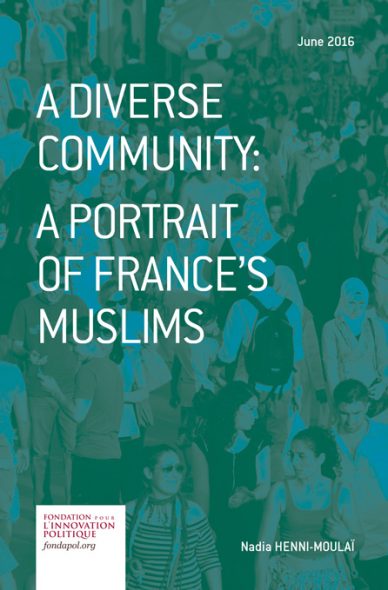
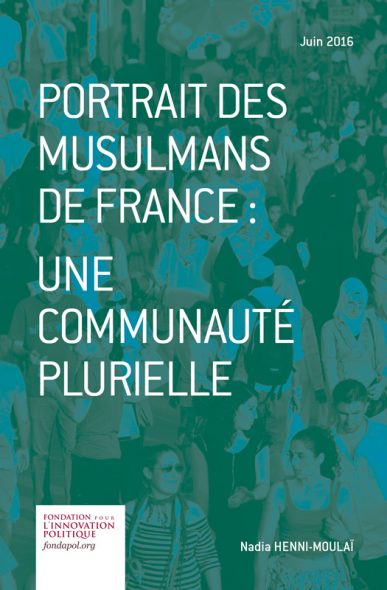

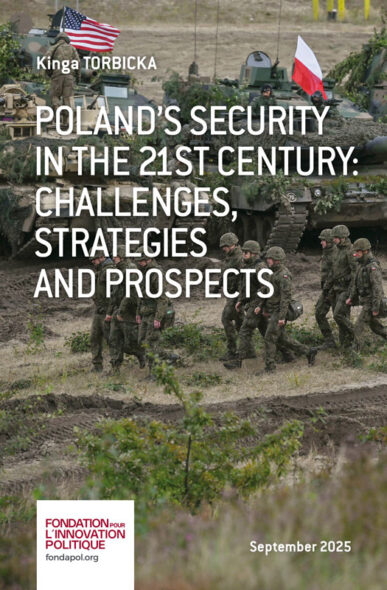
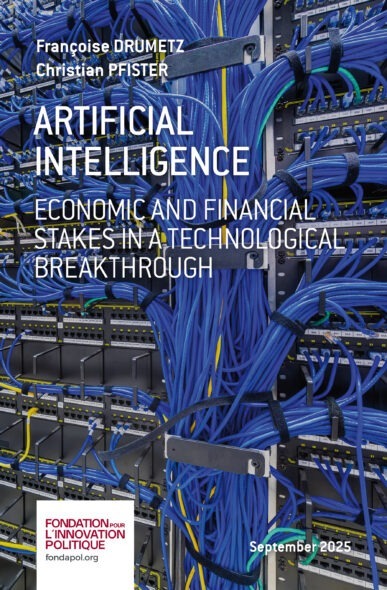
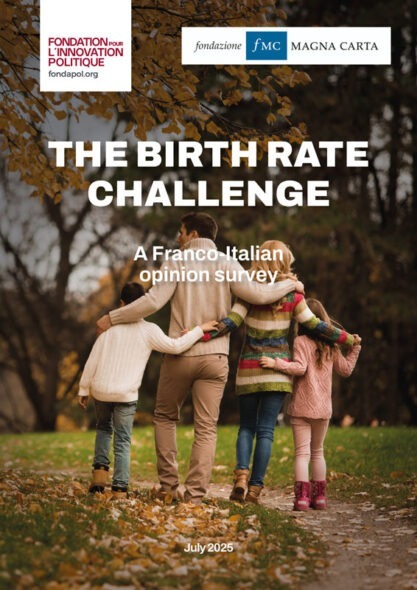
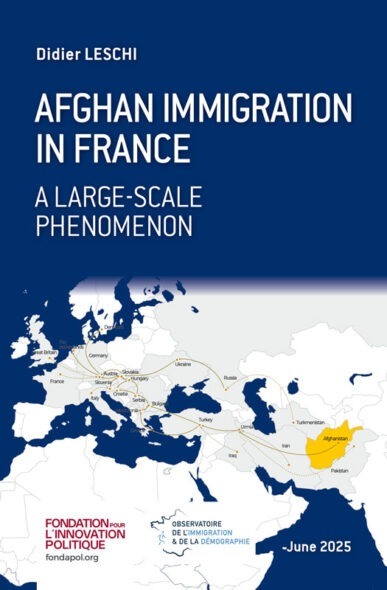
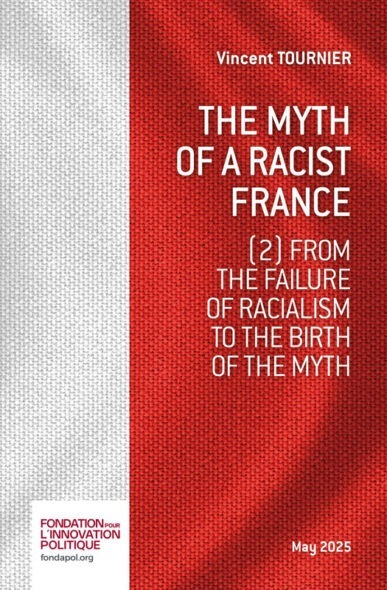
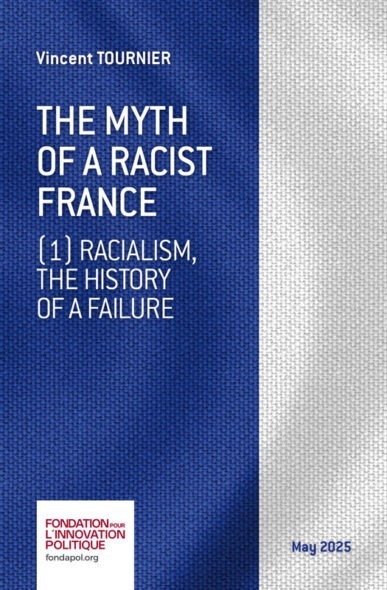




No comments.